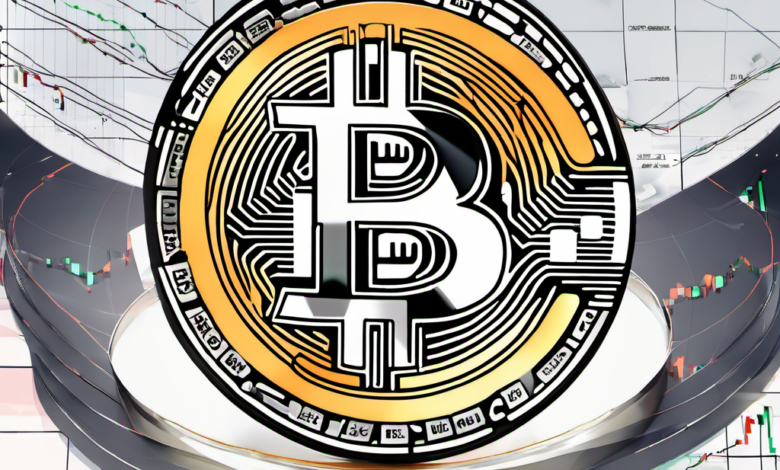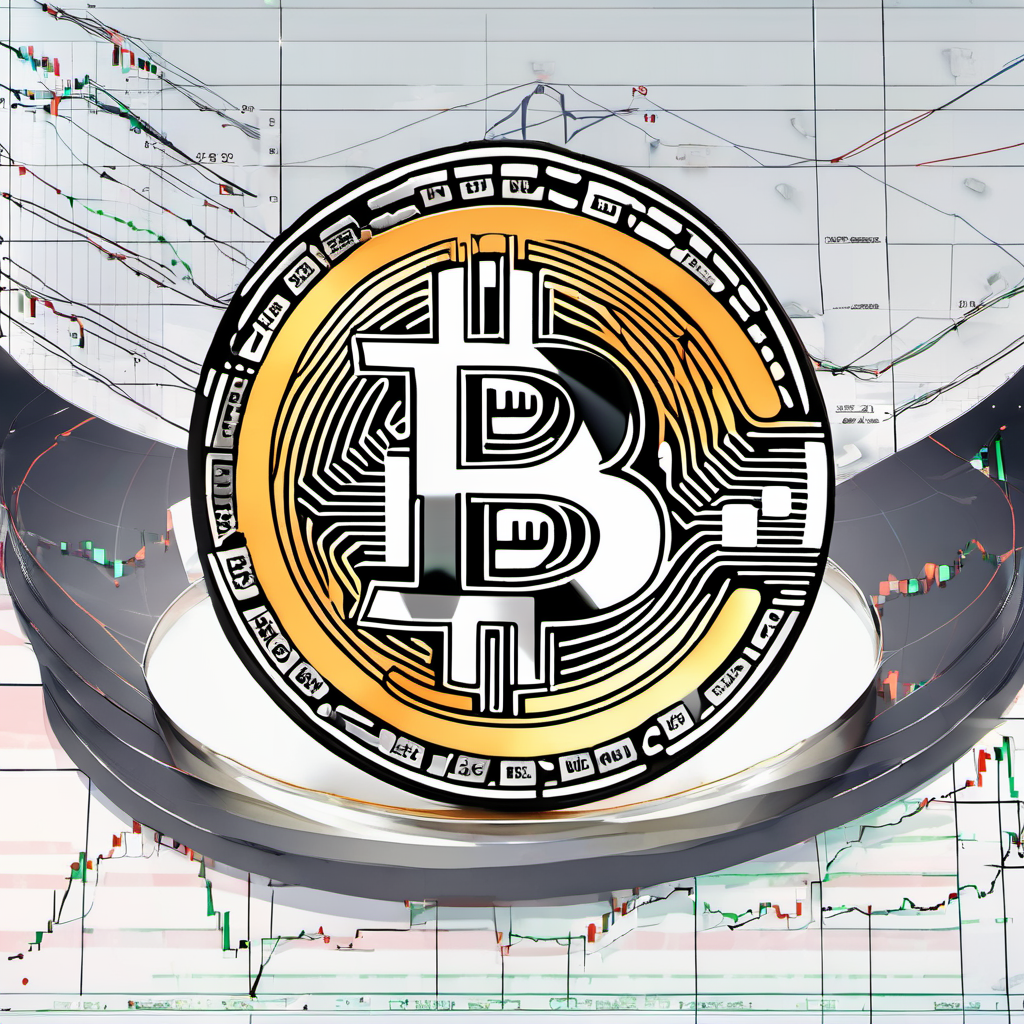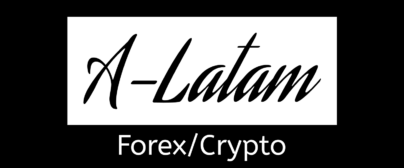
Trading Bitcoin on Binance
Table of Contents
1. Getting Started
Getting started with any new platform often seems a bit daunting at first. The great thing about Binance is that it’s an ideal platform for both beginners and more experienced traders. Whether you’re looking into your first Bitcoin purchase as a newcomer to the space, or if you’re an experienced crypto-trader, Binance has everything you need to get started. Binance has a very diverse selection of cryptocurrencies, meaning you’d likely have to sign up on another exchange if you were looking into investing into more obscure altcoins. Plus, at just 0.1% per trade, Binance has one of the lowest trading fees out of any current exchange. Finally, Binance is ideal because its simple UI and easy navigation make it easy for you to quickly understand the site, execute trades, and extract your funds. All of these factors make Binance a great place to start trading Bitcoin. Step one is to get yourself an account on Binance, which is a relatively simple process. At the top right of the Binance homepage, click on the ‘Register’ button. This will take you to a screen prompting you for your email/ID and a password you’d like for your account. Once you’ve entered this information, you will receive a confirmation email to the address you entered. Click the link in the email – this will return you to the Binance website with your email confirmed. At this point, you will be asked to log in. Make sure to enable two-factor authentication! Once you’re all logged in, you’ll be taken through a couple of very simple security steps to ensure your account is secure. Once all of this is done, you should have finished your Binance registration. Keep in mind that it is likely going to be very tempting to start suggesting inquiring about exactly how much XRP does Binance CEO, CZ, actually own. However, this is simply not information we can get hold of at this current time. Now that you’ve created an account, you’re ready to begin trading!
1.1. Creating a Binance Account
If you’re a corporation or institutional client looking to open a Binance account, see here.
**Important Security Note: Always make sure the URL is Binance.com and nothing else (like the image below). There are phishing scams in circulation that look very similar to the actual site. Always be cautious and double check.
To get started trading on Binance, you need to create an account. The process is very simple, only requiring an email address and a password. The “create account” button is located in the top right of the screen. After clicking the button, a registration page will appear. To sign up, just fill in the fields with your email and desired password. Your email will be used to verify any account changes and withdrawals, so make sure it’s one you have access to. After typing in your email and password, on the bottom of the registration box, if you have a referral ID you can type it in. This isn’t necessary. Then just click register.
Binance is the world’s largest cryptocurrency exchange by volume. This means that its trading platform is the most liquid in the world. To get started trading cryptocurrency on Binance, you would need to deposit some Bitcoin or Ethereum to your account. To learn how to do this, we will make a video soon.
1.2. Verifying Your Identity
Level 2 verification is currently not an option and is said to be a more secure way to verify identity. It is likely that more information on this will be available in the future.
Step 2 is to provide photo identification. This is required to reach level 2 verification but can also be done immediately with the option available to upload photos of your ID in the same section. Binance accepts passports, driver’s licenses, and national ID cards as forms of photo ID. To complete ID verification, you’ll also need to take a moment to fill out the information on your identification in an additional textbox that will appear after uploading your photos.
There are currently two levels of identity verification on the site, with level 1 providing a daily withdrawal limit of 2 BTC worth of digital currency or equivalent, and level 2 allowing for higher withdrawal amounts. Level 1 is quite simple to achieve, only requiring that you provide the site with your personal information such as name, sex, and address. This only takes a few moments to input, and after doing so, you will have access to level 2 verification on your account.
In order to verify your identity on Binance, you’ll need to enable two-factor authentication in addition to providing some personal information and documentation to the site. Assuming you are in the correct “Dashboard” tab under “User Center”, you will find an option to submit an identity verification request just below “Security” in red text. Clicking this will allow you to start the process of providing documentation to verify your identity.
1.3. Setting Up Two-Factor Authentication
Two-factor authentication is a common security feature employed by many applications, especially in mobile apps. Typically, once you’ve entered your credentials at the login screen, you will be asked to enter your one-time code before gaining access to your account. This one-time or single-use code can be delivered in a number of ways, with the most common being via SMS, generated by an app such as Google Authenticator, or delivered by email. SMS is the least secure delivery method due to the ease of which phone numbers can be obtained and SIM cards duplicated, leading to a number of recent high-profile hacks of online personas losing their currency. Email is better; however, a compromised email account means the attacker has your login credentials and the code required to infiltrate. An authenticator app is generally considered a strong balance of security and usability as the data is stored on the app locally and not transmitted. Although this can prove to be an issue should you lose your phone or device and not have the access or ability to restore your data. In which case, it’s always best to check if the app supports multi-device syncing or seek alternative methods to activate your 2FA.

2. Depositing Funds
Some cryptocurrencies allow you to generate multiple addresses. This is either to segregate your assets for organization or for security. If it is an asset that uses the same address/key for all transactions, any old address will remain functional and does not affect the generated address. If an address is generated by the system, it will always ask for confirmation to avoid any possible human errors. Always copy the exact crypto address when sending funds to or from Binance.
When a new deposit address is generated, the old address will be terminated. Tutorials which guide you on how to start or stop generating a new deposit address for a certain cryptocurrency can be found by clicking on the relevant links.
Binance offers a wide array of deposit methods, covering a variety of global fiat currencies and cryptocurrencies. We strive to provide our users with an easy way to transfer funds. When you’ve chosen which cryptocurrency you’d like to deposit, click the “Deposit” button, make sure to use the right address/tag if required.
2.1. Choosing a Deposit Method
If you are a new user to Binance, just follow the instructions given on the deposit page and you will be good to deposit any type of cryptocurrency into your Binance account.
Now, as we are discussing how to start trading on Binance, we will also get into the details of transferring BTC or any other cryptocurrency into a Binance account. But before we do that, you need to really understand how Binance has made getting your account funded so simple with easy-to-use functionalities, which will save your time and decrease the chances of mistakes. This is one of the main reasons why Binance’s volume is increasing day by day, as people are becoming aware of how easy it is to trade on Binance compared to other exchanges where they face difficulty in funding the account or trading on the platform.
But in case you want to input more funds into your account, then you can proceed to the window where you can view the deposit info. This page displays a deposit address (of your Binance account) which is used to deposit a specific type of cryptocurrency. Below the deposit address, there is a QR code that you can use to deposit that specific cryptocurrency from your mobile wallet. This makes it really easy for users as they only have to scan the QR code and their deposit address for that specific cryptocurrency will be automatically generated in no time and with no mistakes. Decreasing the chances of mistakes will save a lot of time.
When you go to the top right corner of the Binance website after you have logged in, you will see the “Funds” tab. After you click on the “Funds” tab, a drop-down will open up. From that drop-down, you can click on the “Deposit Funds” button. This is where Binance has provided full info about how you can get your account funded on Binance. This window will also display all the funds you have in your Binance account. If you have any BNB, BTC, ETH, or any other cryptocurrency available in your Binance account, then there is no need to get it funded again as you can start trading with the available funds that are already present in your account.
As mentioned above, Binance is not new in the market and it has been providing one of the best exchanges for their users to trade different cryptocurrencies. We will get into the depth of each and every trading part later on, but right now we are going to discuss how you can get your Binance account funded with BNB, BTC, ETH, or any other cryptocurrency in order to start trading on it. Binance has made the funding very easy and simple for its users.
2.2. Generating a Deposit Address
Before you can transfer funds to Binance to start trading or investing, you will need to acquire a deposit address which is generated in your Binance account. To do this simply log into your account and click on funds at the top of the page and then “Deposits and withdrawals”. Next you will need to select which currency you wish to deposit, for this example I will use Bitcoin. You will see a list of cryptocurrencies, simply scroll down this list until you find Bitcoin and then click on the deposit button on the right hand side. You should now be presented with a screen that looks something like this. This is the deposit address for that particular wallet, and is the address you will need to send funds to if you want to start trading on Binance using that currency. IMPORTANT: Make sure you select the correct currency in this especially if it’s a token or coin running on the Ethereum network. Because Ethereum and Ethereum based tokens can be sent to the same deposit address, it can be easy to make a mistake and send tokens to your Ethereum wallet thinking it is your Ethereum token wallet. If you do this, your funds will be lost forever. You must be very careful when sending funds, as transactions to deposit addresses cannot be reversed. It is recommended that you test with a small deposit before sending large amounts. Binance will not be responsible for any funds that are lost by depositing to the wrong address. A final note: to ensure that you are always using the correct and most recent deposit address, it is recommended that you refresh the deposit page each time before proceeding with a deposit. Take note of the deposit status in the deposits and withdrawals page. It should show as pending, while awaiting your deposit.
2.3. Transferring Funds to Binance
4. The next step is to go to the place that you have your cryptocurrency stored and send it to the deposit address Binance provided you with. For example, if I was transferring BTC from my Ledger Nano S to Binance, I would send the BTC to that deposit address from the Ledger.
3. You will now be presented with a screen similar to the one below. In the sake of security, I have removed my deposit address, although that is where it would be shown. To find your address, just click on the “Deposit” button next to the coin you are looking for. This address is the location where you will be sending your funds.
2. You should now see a list of cryptocurrencies. Depending on which currency you are transferring, click the appropriate tab. Using Bitcoin as an example, you would click on the “BTC Withdrawals” button.
1. Once you have cryptocurrency added to your Binance account, it’s time to transfer it to a trading account. To do this, go to the Binance homepage, click on “Balances” in the site’s header, and then “Deposits/Withdrawals”.
2.3 Transferring Funds to Binance
3. Trading Bitcoin
– Step 1: Select bitcoin from the dropdown menu. – Step 2: Select the trade type. In this case, we’ll say Market Order. – Step 3: You’re now in the trade window for bitcoin. The top left-hand corner is the trading pair; “bitcoin” in this case is the base currency and “USDT” is the quote currency. Underneath that is the current price per unit. To the right of that is the trading chart. This is a visual representation of the order book in the middle of the screen. The red/green bar is the price of bitcoin, it is adjustable – the smaller it is, the less you will have to pay per unit of bitcoin, although there will be less volume available to trade. The top box in the order book is where people are selling bitcoin, the bottom box is where people are buying bitcoin. As you can see from the screenshot, there are a lot more people buying than selling. The price in the middle is the market price, the easiest way to explain this is it is the equilibrium point where there is no buying or selling pressure. If you place a market order, it will fill it at this price. – Step 4: Complete the trade. As previously mentioned, a market order will fill the order at the current price. All you have to do is enter the amount of bitcoin you want to buy and press “buy”. After placing the order, you can see it in the bottom left corner. If it is processing, it will say “in order”. When it has filled, it will say “complete”. If the order is processing and has not updated to “in order”, then the page has probably timed out and you will need to refresh.
Trading bitcoin on Binance is fairly straightforward. In the basic trading interface, you just need to follow these steps:
3.1. Understanding the Trading Interface
The final component is the actual order placing form. This is also relative to the type of trade you want to make (buying or selling). On the right of the order form is the current market price for quick reference. These 3 components include everything you need to be able to make a trade, and they are consistently well designed across all currency pairs.
The second component is the price data for the pair you are going to be trading. It should be noted that this information comes from the order book, which is a list of buy and sell orders that are waiting to be executed. The highest buy order is on the left with the lowest sell order on the right. The red numbers to the right of the screen show how much and at what price is available to sell, and the green numbers on the left are how much and at what price is available to buy.
On the top right is the pair selection, which is followed by a search box (very useful for large selection of pairs. In the example, we are using BNB/BTC as the pair). On the left of the pair selection is a tab to select what type of trade you want to make. The tab currently selected is for a Limit order, and to the right of it is the tab for Market orders.
If you’re new to trading on this exchange, it’s imperative that you understand the basic layout before trying anything else. Luckily, the trading interface is quite simple. From the main trade page, the layout consists of three primary components.
3.2. Placing a Market Order
Market orders are the simplest product for unleveraged trades that square with spot trades. For buying long, a market order will purchase bitcoin from the lowest priced sell order. For selling short, a market order will sell bitcoin to the highest priced buy order. Let’s assume you’re buying long, and so you want to buy as cheap as possible. Click the market tab in the buy section. If you have alts, sell them for BTC first by using the market tab in the exchange section. Input the quantity of BTC you want to buy. The form will then tell you the total cost of the trade. Click ‘Buy BTC’ and your trade will be executed momentarily. You have now bought BTC using a market order and your position will show a profit if the price rises. For selling short, simply click the market tab in the sell section, input the quantity and click ‘Sell BTC’. You have now sold BTC using a market order and your position will show a profit if the price drops. Market orders can be used to add or reduce a position at any time. Note that there is a 0.05% fee on market orders. Market orders are considered to be instant, and therefore do not incur funding fees, however the trade off is often a less favourable price. Market orders are not suitable when the market is illiquid – during such times you may find that the amount of bitcoin you want to buy/sell is not satisfied at the desired price, and it is preferable to place a limit order. Market orders should also never be used when attempting to enter or exit a position of significant size, because the slippage could be substantial.

3.3. Placing a Limit Order
As previously mentioned, traders have the option to trade either with market orders or limit orders. A limit order gives the trader more control over the price at which their trade is executed. When placing a limit order, you will need to monitor the trade over time or set a price alert. Limit orders can also be used to open a trade. For example, if the price of Bitcoin is currently $500 and the trader believes the price may fall, they can place a limit sell order and set the price to $510. This means if the price reaches $510, their trade will be executed, and it will open a short position. Limit orders can also be used to close a long or short position. In the same scenario, the trader may have opened a long position and wish to close it if the price reaches $490. By setting the price on a limit sell order to $490, it will close the trade if the price reaches $490. This is essentially how a limit order works, buying or selling one asset at a specific price. Limit orders can also be used to set stop losses and take profit levels on trades. For example, a trader opens a long position at $500 and wishes to set a stop loss at $450 and a take profit at $550. The trader can place a stop order by going long 10 BTC and setting the stop price to $460. This will create an order which sells 10 BTC at the best possible price, once the stop price has been reached. Step-by-step instructions on how to place a limit order, stop order, and OCO are as follows:
3.4. Monitoring Your Trades
As you keep trading, you’ll observe that many exchanges offer leveraged trading. This means you will borrow capital to increase the potential return of a trade. For example, if your current equity is 2 BTC and you borrow 2 BTC, you will have 4 BTC to use for trading. Margin trading is highly risky, so it is not suggested for novice traders. Since the trading is unsustainable and the price will fluctuate too much before you are force liquidated. Most altcoin traders build their capital on Bitcoin trades. This is because most altcoins do not have a direct USD pair, but mostly have a direct Bitcoin pair. The most efficient way to gain a profit is to accumulate BTC, trading altcoins until the BTC price goes up and you can sell for a fiat currency. For this reason, it is important to have a substantial amount of BTC before going into altcoin trading, as you will be exchanging your altcoins to increase BTC holdings to increase its USD value.
4. Withdrawing Funds
At Binance, we offer a way to withdraw to certain fiat currencies (USD, EUR, etc.) or to withdraw to a specific cryptocurrency. The former method will generally incur quite high fees, but it is convenient for those that are not interested in trading and just want to offload their coins to a more stable asset. For this method, the user would simply go to “Funds”, “Balances” and then select either “Deposits” or “Withdrawals” on the currency they are interested in. If they are going to withdraw a specific crypto, they will have to find an appropriate wallet. The most general way to withdraw is to directly withdraw to another address. This can be done in “Funds”, “Balances” and then “Withdrawals” on the specific currency. This method will incur a network fee, and the amount of time it takes will vary depending on the specific coin. Network fees are not within the control of Binance, and a user would have to compare this fee to what it would cost them to withdraw from one exchange to another to find the cheapest route. This process, especially when withdrawing to an address for the first time, should be proceeded with a small amount of the coin to ensure that it goes through smoothly.
Withdrawal is the process of taking money out of an exchange account and into your own private possession. It is a concept most closely associated with a banking system. The information here is specific to withdrawing funds from Binance, a typical cryptocurrency exchange although the process of withdrawing is similar across most if not all exchanges.
4.1. Selecting a Withdrawal Method
In its essence, Bitcoin is about freedom to control your money without the need of asking permission from anyone. To exchange Bitcoins in a truly permission-less way for another form of value (either other digital currencies or traditional fiat), it is going to be necessary to withdraw your bitcoins from whatever custody or exchange service you are using, to a location where you directly control the private keys. This is in a wallet where you possess Bitcoin’s raw transaction data, in a format which allows you to control the Bitcoins that those transaction outputs are encumbered to. Only at such a location are you truly in control of your funds, and only at such a location can you perform various forms of peer-to-peer transactions.
It is no joke that the world of cryptocurrency is an increasingly regulated space, with greater requirements for transparency about the movement of funds. In the early years of Bitcoin, privacy was something of a given – but in today’s world, that’s no longer the case. For those who wish to engage with Bitcoin and other cryptocurrencies while preserving their financial privacy, it is now a bit of a grueling task to do so. This is why finding ways to spend or share your Bitcoins anonymously is quite important.
4.2. Providing a Withdrawal Address
When you withdraw funds from Binance, you need to provide the destination address, a piece of data on the blockchain indicating where you want to send your funds. The way data is entered is different for various coins. If you want to transfer bitcoin, for example, you will need to enter your account BTC address (this could be in the form of a QR code as shown in the picture). If you are transferring ethereum, you will need to provide the destination address as an ETH address. Always make sure that the address is correct and relevant to the coin you are sending; providing an XRP address for BTC will result in the loss of your XRP. This is because Ripple and in some cases, other non-BTC coins use destination tags to identify transactions. If the destination requires a tag or memo along with the address, please also enter this in the ‘tag’ or ‘memo’ field. Not including the tag/memo or using the wrong one may result in the loss of your funds. Note that some destination addresses do not require tags/memos. Always make sure a tag or memo is necessary before entering one.
4.3. Initiating the Withdrawal
By this point, you should have completed 2FA on your Binance account (for extra security) and you should be in possession of some cryptocurrency. Go to the “Funds” section on the Binance toolbar and then click on the “Withdrawal” option that drops down. Now, you ought to see a large list of coins. Let’s say, for example, you have Litecoin. It should be very straightforward and you should see the “LTC” option in the dropdown. Select it. This is the screen you should see once you have selected a coin to withdraw. Now, in order to actually withdraw your coins, you will have to click the “Submit” or “No” button. If you click the “No” button, you cancel the withdrawal and end up back on your previous page. If you click the “Submit” button, then you should be able to see your withdrawal request on the right-hand side of the page. You are only required to submit 2FA for the first withdrawal request. Any subsequent requests will not require 2FA. Usually, Binance will confirm your withdrawal by sending an email to your email address. Open the email and click the withdrawal confirmation link. Your withdrawal will then be complete. Note: You may have to go into your email settings and allow for emails from Binance to be received, as they may be sent to junk mail. This is it! You should now have initiated and completed a transfer of coins from your Binance account to an external address.



